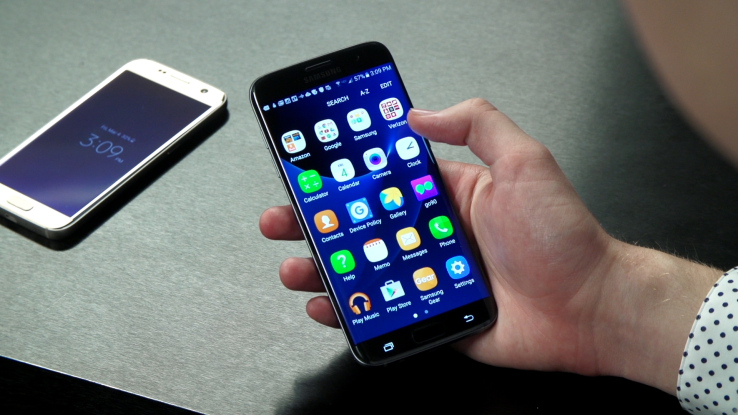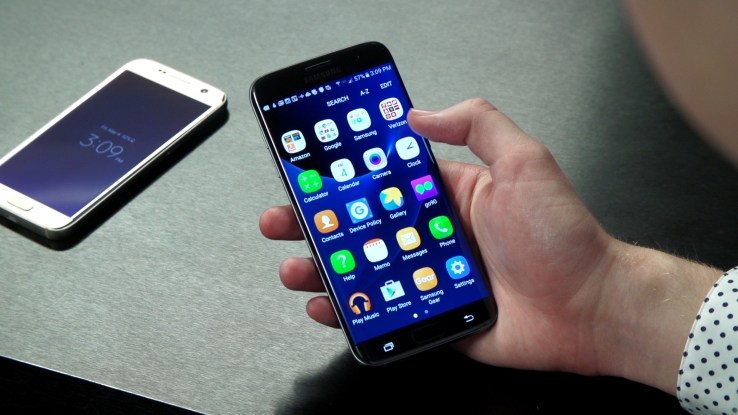

It’s become increasing common to hear of Samsung’s mobile business struggling, but here’s some positive news — early signs around its newest devices suggest that the company might be returning to times of success.
On the back of Samsung forecasting upbeat financials for its upcoming quarter of business, a report from analyst firm Counterpoint Research suggests that the first month of sales for the Galaxy S7 and Galaxy S7 Edge are 20 percent higher than last year’s flagship devices.
Samsung itself didn’t cite any specific factors behind its unexpectedly positive predictions for its Q1 2016 period but, with its latest smartphones fresh on the market, the broad assumption is that the devices are off to a promising start.
Counterpoint conducted into research across 40 markets which, the firm said, shows that Samsung is seeing up to 50 percent higher sales with its Galaxy S7 series versus last year’s Galaxy S6 models in some parts of the world. On specific markets: in the U.S., the firm estimates that sales are up 30 percent, in Western Europe that figure is 20 percent, while it is at 10 percent in China. Only Korea has seen “relatively flat” growth, Counterpoint said, and that could be down to last year’s models going down relatively well on home turf, its strongest market.
Overall, the firm estimates that Samsung has shipped 10 million Galaxy S7 devices worldwide thus far, that’s 25 percent higher than it estimates for the Galaxy S6 last year after its first month.
The immediate thought might be that the devices are more appealing to consumers — Samsung returned some popular features left out of the Galaxy S6 family, notable water resistance and expandable memory options — or that Samsung hit a home run with its marketing. Those may be factors, but Counterpoint argues that basic preparation and supply-demand management is key.
The company seems to have picked its timing well, launching the Galaxy S7 devices a month earlier than usual while rivals like Apple and other rivals are between devices, and it got its ducks in line on the supply chain side of its business.
“Last year, the Galaxy S6 Edge was very popular and in high demand, no one was looking at the flat version,” Counterpoint Research Director Neil Shah told TechCrunch. “However, making those curved edges had low yield and hence Samsung couldn’t supply [demand from consumers] in time and [it] lost the window of opportunity.
“Fast forward one year and the Edge yields have improved, hence, supply too,” he added.
In other words, Samsung didn’t anticipate that the Galaxy S6 Edge device would draw such attention last year, and that caught it flat-footed when it wasn’t able to fully service demand from customers. This year, that experience helped it increase supply for the Galaxy S7 Edge so it could translate demand for the device into sales.
There are, of course, other factors at play. Shah added that the lack of (perceived) wow factors between the iPhone 6 and iPhone 6S may also have played into Samsung’s hands, too. However, despite early promise, he stressed that Apple is still the company to beat, particularly when it comes to the most expensive phones.
“Overall, the iPhone is still the one which has increased the premium market pie, so Samsung has their work cut out to maintain this momentum,” Shah explained.
Beyond its halo devices, Samsung’s new strategy has seen the company target emerging markets where younger rivals, like China’s Xiaomi, eroded the Korean firm’s dominance with highly competitive and lower priced Android smartphones.
Samsung has fired back with its own take, introducing new types of phones that offer a higher quality user experience at a lower price point than it traditionally offered. The Wall Street Journal explains that the new Galaxy A, Galaxy E and Galaxy J families offer near-high-end specs at considerably lower prices, and they have helped Samsung regain the top spot for sales in India and Indonesia, two of Asia’s most populous countries with fast-growing smartphone markets. China, though, continues to be a tough place for Samsung.

